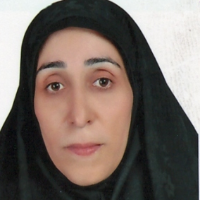Assessing the Impact of Rural Housing Upgrading Program on Vernacular Rural Housing (Case Study: SoltanAli District in Gonbad Kavus)
Author(s):
Abstract:
Rural development and strengthening rural housing have been among the major concerns of politicians and planners in Iran, and in this regard various rural development programs have been designed and implemented so far. Rehabilitation and renovation program for rural housing is the latest and one of the most important of such programs in Iran. This program aims at providing at least two hundred thousand sustainable and resistant housing units in rural areas and hence has been one of the most influential contemporary rural development programs in the country. This program has accelerated the evolution of the form and physical characteristics of rural settlements. Aiming at upgrading the quality of rural housing and settlements and enhancing the safety, health and welfare of their residents, this program initially targeted the marginalized groups and its progress was very slow. In recent years, the program has been expanded by including credits and hence its progress has improved quantitatively and qualitatively. Although the program has been a notable achievement in terms of poverty reduction and enhancing safety, it seems to pay little attention to the vernacular housing typologies and patterns in rural settlements . This article evaluates the impacts of this housing program on vernacular housing patterns in Turkmen villages of Soltan Ali district in Gonbad . This analytical-descriptive study is an applied research. The study focuses on households living in the village of Soltan Ali. A sample of 300 households was selected randomly by using the Cochran formula. Data was collected by using questionnaire with the reliability of 0/8 = α, using Cronbach's alpha coefficient. Data analysis relied on descriptive statistics, test T-Test, Chi-Square and Comolograph- Smirnov . The findings show that although all residential units that were covered by the program and received a housing loan were built by engineers and architects, 45.3% of them was not built in accordance to the approved plans. By comparing the yard area index, it is observed that the yard area in houses which received a housing loan is almost half of those who did not, which highlights a deviation from the vernacular housing typology of the area. The average area of the residential space of both groups is almost similar with 91.5 and 105.5 square meters in the first and second group, respectively. While in Turkmen vernacular architecture, the built area of the house locates in the middle of the plot, in the newly built houses, these areas locate along streets and alleyways, on the edge of plots. Comparing the height index also shows that while in the vernacular architecture double story houses are rare, they become more popular with mixed residential and commercial uses in newly built housing.
The dominant form and orientation in vernacular houses is a rectangular shape facing south, while the newly built ones -inspired by urban architecture - are square or polygon and sometimes are not facing the sun. The most important negative consequence of the housing program in Turkmen region relates to the limited attention paid to the secondary functions of houses, so that 62.6 per cent of houses with loan and 30.7 percent of those without loan had no space for secondary functions of the house. Another change compared to the vernacular architecture is fencing all around parcels for privacy and safety reasons. Given the technical requirements of housing construction in new houses like the use of double-glazed windows, these units show a 70.60 per cent improvement in terms of energy consumption.
The dominant form and orientation in vernacular houses is a rectangular shape facing south, while the newly built ones -inspired by urban architecture - are square or polygon and sometimes are not facing the sun. The most important negative consequence of the housing program in Turkmen region relates to the limited attention paid to the secondary functions of houses, so that 62.6 per cent of houses with loan and 30.7 percent of those without loan had no space for secondary functions of the house. Another change compared to the vernacular architecture is fencing all around parcels for privacy and safety reasons. Given the technical requirements of housing construction in new houses like the use of double-glazed windows, these units show a 70.60 per cent improvement in terms of energy consumption.
Keywords:
Language:
Persian
Published:
Housing And Rural Environment, Volume:36 Issue: 157, 2017
Pages:
101 to 116
magiran.com/p1700067
دانلود و مطالعه متن این مقاله با یکی از روشهای زیر امکان پذیر است:
اشتراک شخصی
با عضویت و پرداخت آنلاین حق اشتراک یکساله به مبلغ 1,390,000ريال میتوانید 70 عنوان مطلب دانلود کنید!
اشتراک سازمانی
به کتابخانه دانشگاه یا محل کار خود پیشنهاد کنید تا اشتراک سازمانی این پایگاه را برای دسترسی نامحدود همه کاربران به متن مطالب تهیه نمایند!
توجه!
- حق عضویت دریافتی صرف حمایت از نشریات عضو و نگهداری، تکمیل و توسعه مگیران میشود.
- پرداخت حق اشتراک و دانلود مقالات اجازه بازنشر آن در سایر رسانههای چاپی و دیجیتال را به کاربر نمیدهد.
In order to view content subscription is required
Personal subscription
Subscribe magiran.com for 70 € euros via PayPal and download 70 articles during a year.
Organization subscription
Please contact us to subscribe your university or library for unlimited access!



